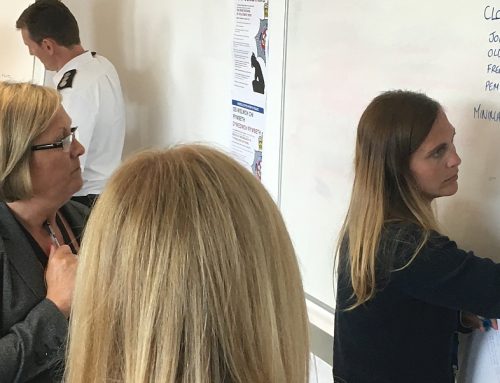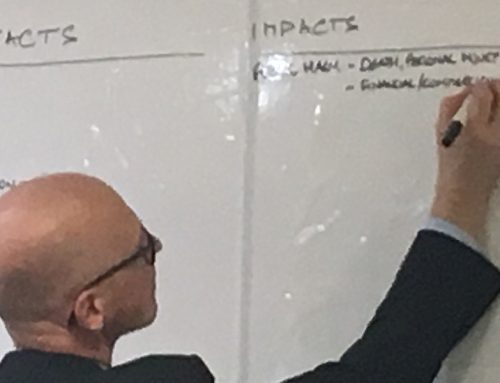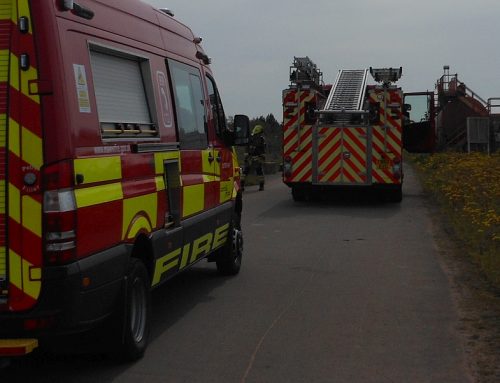Organisations invest heavily in training. The 2020 CIPD report on learning and skills at work shows that organisations recognise the need to improve capabilities not only to meet business priorities but also to develop their people in key management roles. These drivers are clearly visible in the COMAH-regulated sector where organisations invest considerable time and effort developing the skills and capabilities of the Incident Management Team (IMT). Having a well-trained, regularly exercised IMT provides the right level of assurance should an emergency situation occur, and also addresses regulatory requirements.
So far, so good. But the 2020 CIPD report on learning and skills at work also shows that organisations are now having to do more with less, and there are gaps between intention and reality when it comes to investment, resources and training deployment. Organisations know that competence needs to be maintained but what are the most efficient methods to do this? How can businesses in the COMAH-regulated sector provide the right level of assurance of IMT capability that meet the requirements of the regulations?
Training fidelity
When clients ask us these questions we make the straightforward recommendation that it is most effective to train less intensely but more often, thus increasing basic skills and competence. This means regular training for the IMT rather than just a single annual exercise. Importantly, we also recommend that IMT training needs to be high fidelity, in order to maximise value and return on investment. Training fidelity is the extent to which training replicates the actual environment that the training will be transferred back to, so in terms of IMT training this means practical exercises based on the relevant organisational context, actually mobilising the team, using the designated facilities, and working through the systems and processes. There is no better way to gain insights into how the IMT works in practice.
These insights then feed into the development process; extracting additional value from the training session. For example, you might consider:
- How quickly was the IMT activated as the exercise scenario developed?
- How well did the IMT achieve situational awareness?
- How well did the IMT establish key response actions?
- How well were decisions documented?
Maintaining competency
Competence goes up quickly during the training period, then gradually reduces over the following months if the skills are not exercised. We describe this as a ‘saw-tooth profile’ of competence development. It translates into the IMT capability for tackling emergency situations tracking up and down. To address this problem we recommend that organisations develop an IMT competence maintenance training programme using training records and forecasting. Managing the training programme in this way assures the competency of the IMT and a consistently effective response.
We recommend that organisations develop a pool of competent individuals with the relevant skills and training sufficient to cover each IMT role, as a minimum requirement. We also recommend additional personnel are given the same training, so they can easily provide backup cover when required. Doing this provides a level of resilience if key personnel become suddenly unavailable and therefore smooths out the impact of personnel changes on the profile of your IMT capability. If you are able to demonstrate a systematic auditable approach to IMT training and competence assurance, then this goes a considerable distance towards regulatory compliance with this aspect.
Training quality
We have unique emergency and crisis management competency frameworks that cover all levels of an organisation, including COMAH roles and responsibilities. Our frameworks allow us to map the training needs of a team to identified competencies, after which we develop training schedules to address these training needs. As mentioned above, best practice is to train less intensely but more often, increasing basic skills. Training once a year increases skills in the short term, but does not address skills fade in the longer term. We recommend a regular training programme to keep skills fresh and provide a good level of competency assurance.
We deliver high quality training using recognised techniques alongside innovative methods so we can obtain maximum value from our time with your people. Feedback received from our training courses is shared internally as part of our quality management system and is used to inform our learning and development programme. Led by our in-house professional teacher, this ensures our team maintains the high quality learning and development delivery that our clients expect. We take pride in our training, and conduct regular CPD sessions to ensure our team stays up to date with best practice and assure consistent training quality.
What makes the difference?
Eddistone Consulting have drawn together a team of specialists who have extensive collective experience, coming from industry, the emergency response services, the multi-agency response community, health & safety and education backgrounds, to develop and deliver a competency-based training and exercise framework with identified performance deliverables to measure effectiveness and assure competence.
We use a proven systematic approach that explores how to respond. We have core methodologies for each response level of Emergency, Incident and Crisis (Operational, Tactical and Strategic) management. The credibility and reality of our exercises, experienced in a safe environment where real learning takes place, is always valued by our customers.
How we can help
We recognise that many of our clients, especially in the COMAH-regulated sector, are under pressure to maintain mandated emergency management capacity. We are committed to providing you with emergency management support wherever possible throughout this pandemic. This is important to ensure that you do not fall behind with your scheduling backlog and to maintain the required capacity, despite the impact of absence and illness on safety-critical roles. We have two strategies to help you achieve this:
- We have developed remote methods for training and assessment, coupled with remote mentoring for the development of key roles. This facilitates accelerated learning and makes the best use of technology and advanced learning practices.
- We have a pool of experts ready to provide direct support, both remotely and in person, to reinforce capacity and mentor your existing capability. Our team of experts is ready to stand alongside your key emergency response personnel.
Contact us to discuss how we can help you.





